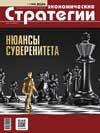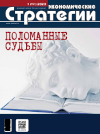DOI: 10.33917/es-6.198.2024.138-143
Based on the analysis of existing methods for a comprehensive assessment of the economic security level of business entities, the author proposes a methodology for an integrated evaluation of the economic security of a commercial organization providing medical services, based on the calculation of a cumulative criterion via the distance method. This methodology makes it possible to consider peculiarities characterizing the aspects and risk factors of the economic security of a commercial organization providing medical services, to assess the level of economic security both in general for the organization and for its individual functional components as well.
References:
1. Glebova O.V., Mitrofanova M.N. Otsenka ekonomicheskoy bezopasnosti gostinichnogo predpriyatiya [Assesment of the Economic Security of a Hotel Enterprise]. Ekonomicheskaya bezopasnost’, 2023, vol. 6, no 3, pp. 1133–1152.
2. Krasnoshchek A.A., Dinets D.A. Sovremennye aspekty analiza i otsenki ekonomicheskoy bezopasnosti organizatsiy [Modern Aspects of Analysis and Assessment of Economic Security of Organizations]. Korporativnye finansy, 2010, no 4, pp. 73–83.
3. Kundakova L.R., Temirbaeva G.R., Daukenova G.A., Nurtazinova A.S. K voprosu kolichestvennoy otsenki ekonomicheskoy bezopasnosti firmy [On the Issue of Quantitative Assessment of the Economic Security of a Company]. Mezhdunarodnyy zhurnal prikladnykh i fundamental’nykh issledovaniy, 2017, no 9, pp. 148–152.
4. Mitrofanova M.N. Otsenka effektivnosti proektov po vnedreniyu nauchno-issledovatel’skogo i ispytatel’nogo oborudovaniya na promyshlennom predpriyatii [Assessment of the Effectiveness of Projects for the Implementation of Research and Testing Equipment at an Industrial Enterprise]. Upravlenie
proektami i programmami, 2015, no 3, pp. 196–204.
5. Sergeev A.A. Ekonomicheskaya bezopasnost’ predpriyatiya [Economic Security of an Enterprise: Textbook and Workshop for Universities]. Ucheb. i praktikum dlya vuzov. 3-e izd. Moscow, Yurayt, 2023.
6. Modenov A.K., Belyakova E.I., Vlasov M.P., Lelyavina T.A. Ekonomicheskaya bezopasnost’ predpriyatiya [Economic Security of an Enterprise]. Saint Petersburg, Izd-vo SPbGASU, 2019, 550 p.
7. Goloshchapova L.V., Yakushina S.O. Upravlenie finansovymi riskami v sfere zdravookhraneniya i sposoby ikh minimizatsii [Managing Financial Risks in the Healthcare Sector and Ways to Minimize Them]. Vestnik Akademii znaniy, 2019, no 31, pp. 278–281.
8. Zavrazhskiy A.V. Kompleksnoe strakhovanie riskov professional’noy meditsinskoy otvetstvennosti [Comprehensive Insurance of Professional Medical Liability Risks]. Problemy analiza riska, 2020, vol. 17, no 3, pp. 82–89.
9. Zadvornaya O.L., Alekseev V.A., Borisov K.N. Kadrovye riski v obespechenii bezopasnosti meditsinskoy deyatel’nosti [Personnel Risks in Ensuring the Safety of Medical Activities]. MIR (Modernizatsiya. Innovatsii. Razvitie), 2017, no 8, pp. 132–139.
10. Salkhaeva B.D., Nurbaeva G.K., Zhumakarimov M.A., Amanov S.B. Upravlenie riskami v zdravookhranenii: Obzor literatury [Risk Management in Healthcare: a Literature Review]. Journal of Health Development, 2020, vol. 17, no 35, pp. 24–29.
















